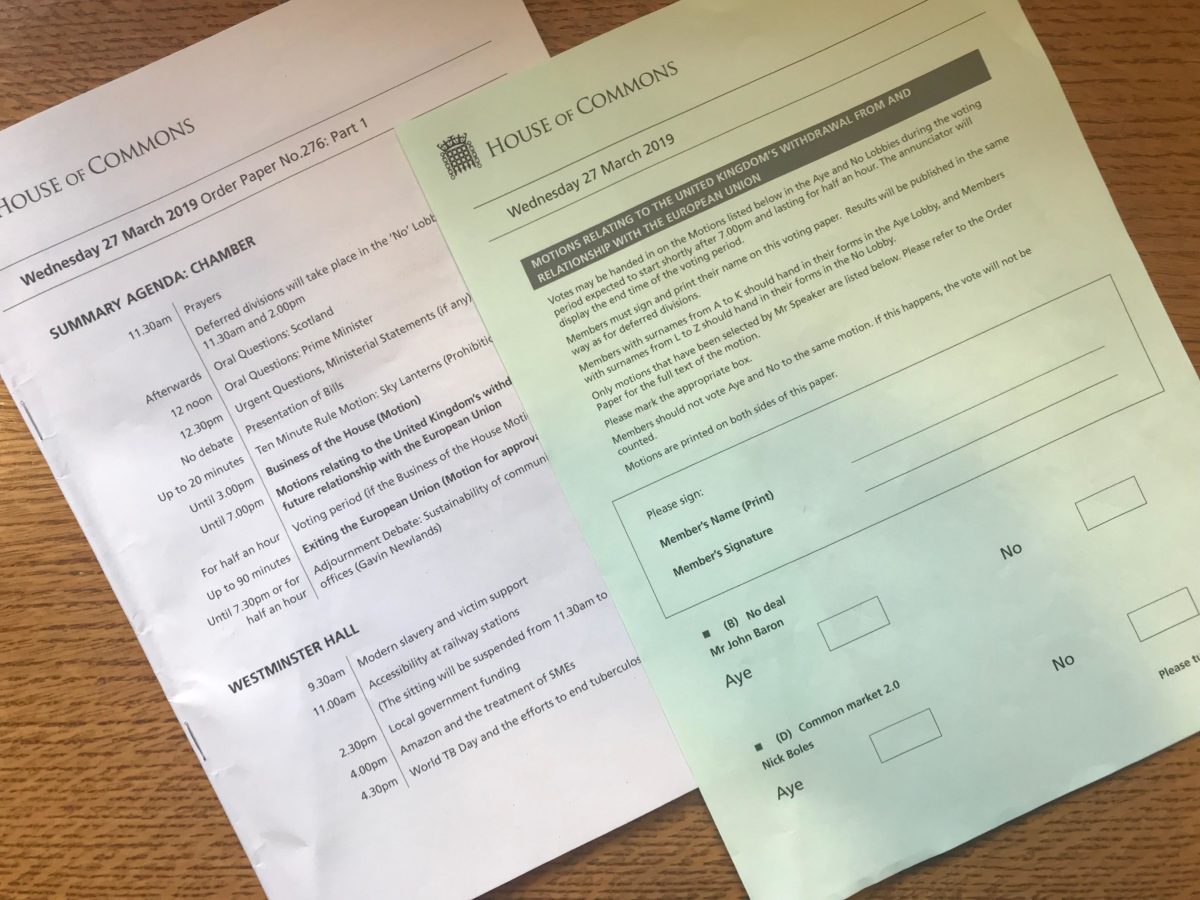Paul Blomfield A strong voice for Sheffield Central

After months of the Government using their power over our business to prevent Parliament properly debating all Brexit options, the House of Commons ‘took back control’ yesterday and started two days of debate on how to break the current impasse. The purpose of the debate was to narrow down the options for a further debate on Monday so, as expected, none got a majority. Hundreds of constituents have written to me on the choices, so I thought it would be helpful to share how I cast my votes.
Labour’s view, as I’ve set out in the Commons, is to seek a close economic relationship with the EU and to support a public vote between the best leave option and remaining in the EU. Yesterday we were seeing what consensus could be built and so I gave support to some proposals which moved debate in the right direction, although falling short of my best outcome.
Labour imposed a ‘three-line whip’ to vote for the following amendments, which I was pleased to support:
- Customs Union (Amendment J) – Moved by Ken Clarke, it required the Government to seek a customs union with the EU and got the second highest number of votes (264).
- Labour’s Alternative Plan (Amendment K) – Setting out proposals for a customs union, close relationship with the single market, alignment of rights and protections, participation in EU agencies and strong security co-operation, it got the third highest number of votes (237).
- Confirmatory public vote (Amendment M) – Moved by Labour’s Margaret Beckett, it called for the ratification of any deal though a public vote and secured the highest number of votes (268).
There was a ‘free vote’ on other options, of which I supported the following:
- Common Market 2.0 (Amendment D) – Moved by Conservative Nick Boles, it called for membership of the European Free Trade Area (EFTA) providing participation in the single market as part of European Economic Area (EEA), together with a ‘customs arrangement’. I have concerns about its failure to seek a full customs union, but felt it was worth exploring further.
- Revocation to avoid no deal (Amendment L) – Moved by the SNP’s Joanne Cherry, it called on the Government to revoke Article 50, which gave notice of the UK’s decision to leave the EU, if there is no deal a day before the Article 50 deadline.
There were three options which I voted against:
- EFTA and EEA (Amendment H) – Moved by Conservative George Eustice, it ruled out a customs union, which I support, although backing single market participation.
- No Deal (Amendment B) – Moved by Conservative Brexiteer John Baron, it tried to commit the UK to leave without a deal on 12 April and was strongly rejected (by 160 votes to 400).
- Contingent preferential arrangements (Amendment O) – Moved by Conservative Brexiteer Marcus Fysh, it aimed for what has been described as a ‘managed no deal’.
Theresa May’s desperate bid to offer resignation in return for support from the Brexit extremists in her party seems to have failed, but she appears to be planning to bring her deal back, for a third time, in some amended form tomorrow.
May’s commitment to stand aside for a new Tory leader to oversee the negotiations on our future relationship with the EU creates new risks. A Tory leadership election, with candidates competing against each other for the votes of their Brexit-backing membership, will inevitably lead to an even harder Brexit.
Labour will reject May’s deal again for all the reasons I set out here. If it is voted down, we will be working across parties over the next few days to seek agreement on a way forward, for when we vote again on Monday, based on our objectives of a close relationship and a public vote.
